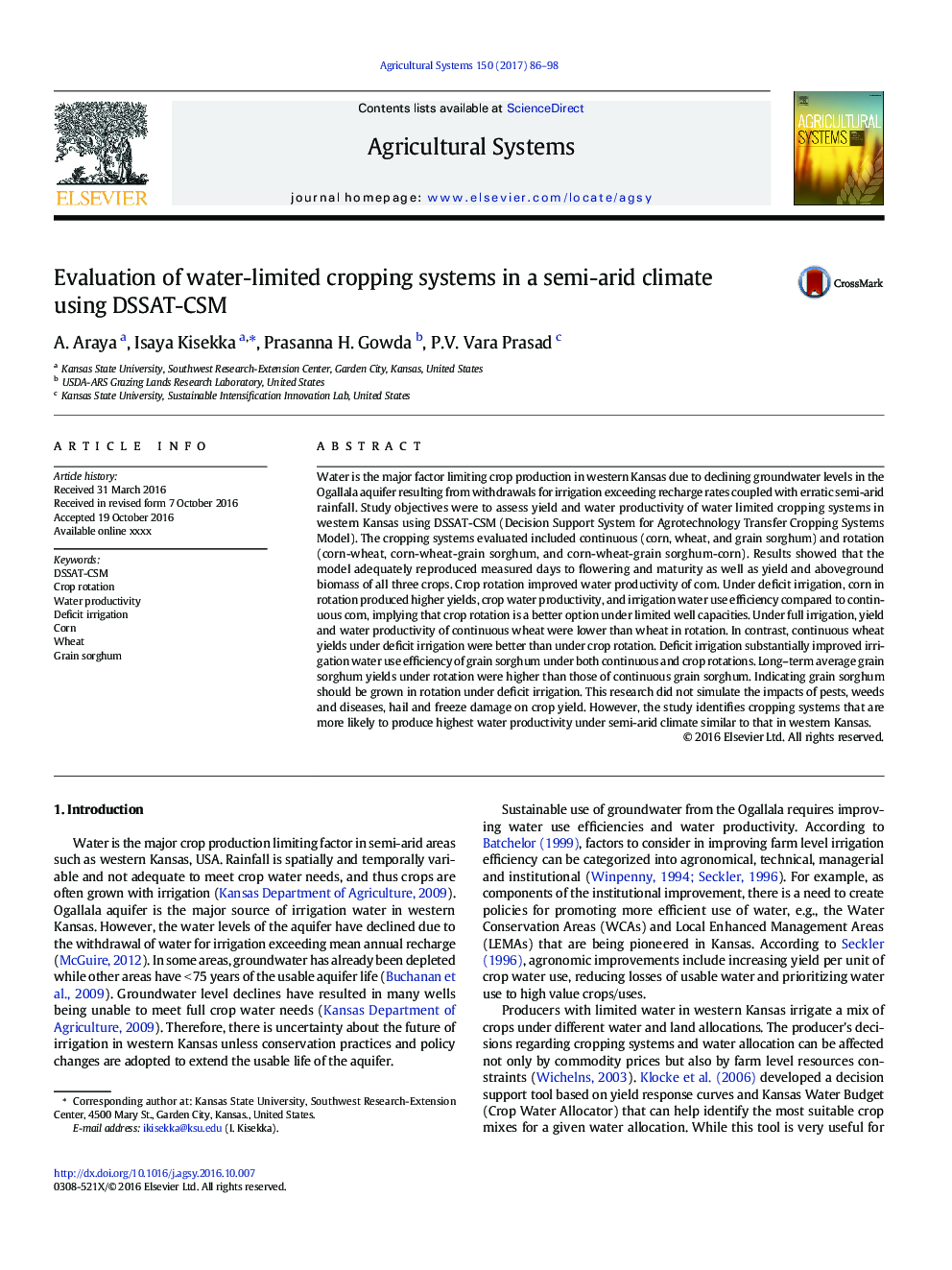| کد مقاله | کد نشریه | سال انتشار | مقاله انگلیسی | نسخه تمام متن |
|---|---|---|---|---|
| 4491109 | 1623220 | 2017 | 13 صفحه PDF | دانلود رایگان |
• Crop rotation improved water productivity.
• Deficit irrigation is better than full irrigation for grain sorghum.
• Under full irrigation continuous corn is better.
• Wheat should be grown in rotation.
Water is the major factor limiting crop production in western Kansas due to declining groundwater levels in the Ogallala aquifer resulting from withdrawals for irrigation exceeding recharge rates coupled with erratic semi-arid rainfall. Study objectives were to assess yield and water productivity of water limited cropping systems in western Kansas using DSSAT-CSM (Decision Support System for Agrotechnology Transfer Cropping Systems Model). The cropping systems evaluated included continuous (corn, wheat, and grain sorghum) and rotation (corn-wheat, corn-wheat-grain sorghum, and corn-wheat-grain sorghum-corn). Results showed that the model adequately reproduced measured days to flowering and maturity as well as yield and aboveground biomass of all three crops. Crop rotation improved water productivity of corn. Under deficit irrigation, corn in rotation produced higher yields, crop water productivity, and irrigation water use efficiency compared to continuous corn, implying that crop rotation is a better option under limited well capacities. Under full irrigation, yield and water productivity of continuous wheat were lower than wheat in rotation. In contrast, continuous wheat yields under deficit irrigation were better than under crop rotation. Deficit irrigation substantially improved irrigation water use efficiency of grain sorghum under both continuous and crop rotations. Long–term average grain sorghum yields under rotation were higher than those of continuous grain sorghum. Indicating grain sorghum should be grown in rotation under deficit irrigation. This research did not simulate the impacts of pests, weeds and diseases, hail and freeze damage on crop yield. However, the study identifies cropping systems that are more likely to produce highest water productivity under semi-arid climate similar to that in western Kansas.
Journal: Agricultural Systems - Volume 150, January 2017, Pages 86–98
